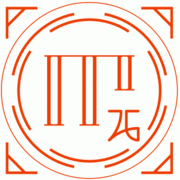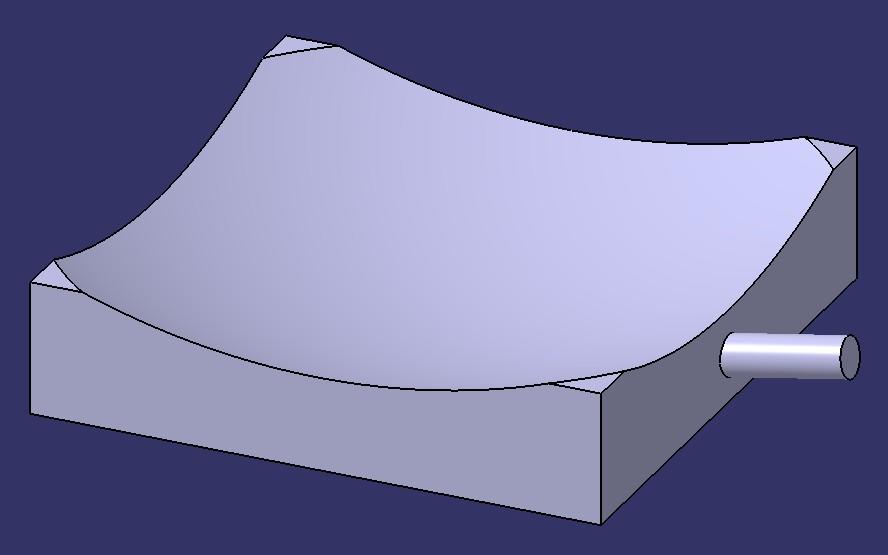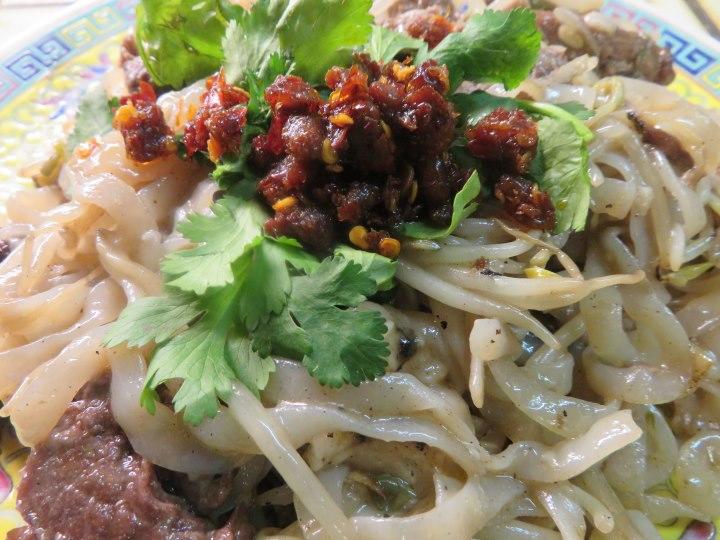Search the Community
Showing results for 'wok'.
Found 5,153 results
-
Just a comment on adapter idea. If you consider how conventional cooking works, the "normal" electric hob works using both conduction (the element is hot and in contact with the pot/pan) and radiation (those parts of the hot element not in contact with the pot/pan). Gas works by a combination of convection/conduction (the hot air & gases contacting the pot/pan) and radiation (the hot parts of the gas element that are heated by the burning gases radiate to the pot pan). The induction heating works a lot like a microwave in that the molecules of the pot/pan are directly heated by the radiation (magnetic waves). Now the food in the pot/pan is heated mostly by conduction of the heat from the pan to the food (in theory also a little radiation but not much once the food starts to heat). Radiation relies on the DIFFERENCE in temperature between 2 bodies. The final temperature of the pot/pan/wok will depend on how much heat it radiates into its surrounds. It is receiving radiation from the heat source but it is also losing heat through radiation into its surrounds. What ever material you use for the wok itself, the method of transmission of the heat will be by conduction and radiation. What makes a wok efficient in the way its used is that the gas around heating it is VERY hot. Similarly if used over say a conventional fire (wood or charcoal) the hot gases are very hot and the radiation component is very high. Back to the adapter. For it to be efficient in heating the wok is it must make very good contact with the adapter to allow for very good conduction OR it must be VERY hot to allow good radiation. Because radiation relies entirely on the difference in temperature, once the wok is close to the same temperature as the adapter, it will stop being heated by radiation and so will always remain at a lower temperature than the adapter. So will it work? Of course it will BUT (there is always a but) the adapters temperature will need to be much hotter than the what the final temperature of the wok is supposed to be. My guess wold be that the adapter would need to be heated to several hundred degrees above what the wok temperature needs to be, probably close to the temperature of wood coals (from 1250F to 1800F) which will probably damage your stove. You would then control the heat of the wok by how far above the adapter you placed the wok. (that's effectively what you do with a wok over a conventional fire). That is for a conventional wok, a stainless wok transfers heat much slower so the temperature is probably needed to be even higher. Instead of an adapter you could make the adapter into the shape of a wok and use it directly BUT (that dreaded but) the properties of a wok are twofold; they gain high heat rapidly but they also lose heat rapidly (the food sears but doesn't burn through, the contact point on the wok is cooled by the food/oil and the food is moved on to another hot point), but the adapter wok would not lose this heat rapidly. Any food not moved on immediately would just char. You could make a flat adapter, put a layer of charcoal on it and use the induction to start & maintain the charcoal burning, but you have to deal with the hot gases & ash. Be also be great for searing steak... Probably cheaper and easier to use a wok gas ring and bottled gas but that's a whole new set of problems.
-
I have had a few woks over the years. The two I use is a cast iron wok for Curries and the el-cheapo carbon steel wok for hot stir fry. It is light and is virtually nonstick from all the cooking that has gone on. It is easy to clean between dishes...I use a bamboo brush and it reheats in a flash.
-
20 some years ago, when I bought my first induction hob, one of the first induction ready pans I purchased was a saucier. A pan which looks like a flat bottom wok with a very large flat bottom and thick heat distribution plate. My (flat bottom) wok was my most frequently used pan. I still have the wok ring which I purchased as an add on for the gas range,. After using the saucier, the wok moved into less and less accessible storage. Eventually I gave it to the town swap shop to find it a new home. I have never found anything that the wok could do an the saucier not do as well or better. (I have never had or used a high power wok burner.)
-
When faced with electric coil-element or smooth-top US stoves, the Chinese students and post docs I worked with found standard skillets or fry pans better suited than a wok. They occasionally used a high-power outdoor gas wok burner when cooking for larger groups and parties but stuck with the skillets for indoor, family cooking. In sharing recipes, they recommended that I do the same on my low-powered gas range.
-
I think the reason is that stainless steel is poor conductor of heat (most of the heat going into pure stainless steel pan will try to warp it), and as aside bonus carbon steel can get 'non-stick' patina. I've done patina (by applying horseraddish and ketchup, of all things) on one of my carbon steel knives which prevent it from rusting, but does not prevent it from imparting 'metallic' taste to food being cut. I like to keep things as 'traditional' as possible, hence me trying to figure out a way to make (what I percieve to be a quintessential) wok work in an environment (heating element) not very suited to it. I'm more of a braising and simmering (european style) type of guy, but this experiment of mine is making me want to try stir-frying on electric stove (any my stove has 3 gas burners ) just as a proof of concept.
-
That's correct - but you typically don't want heat all the way up the side walls of a wok. The curved induction machine you linked looked perfect for a wok - the heat would come to about the same place as it would on a traditional gas wok burner. If you don't have a curved induction surface like that, then you need to use a flat bottomed wok otherwise you will only have a very small point of heat source - aluminum or not, it's not enough to get the heat you want.
-
But the pan's magnetic field would only be the area that's in close contact to the induction plate . Thicker aluminum allows the heat to travel past this zone with less drop off. I've seen this with pans that have larger surface areas than the induction plate. The side walls on a wok aren't creating heat on an induction burner. But they get heat transferred from the parts of the pan that are creating the heat... no?
-
Yeah, I think you're right. Air is a poor at transmitting heat. I'm thinking I'm going to sell this wok. It works great in terms of conducting heat, but it needs a different interior surface. I wonder if it's possible to possible to clad aluminum and carbon steel together? That would be a decent wok for induction.
-
Waiting for these to become more affordable: https://www.hubert.ca/product/68609?CAWELAID=120051220000016267&gclid=CjwKCAiA9qHhBRB2EiwA7poaeB1L_jOmBpqRkUy5MDeW75RTZigoegZuZDDHQUOBVkUxM9KltowDUhoCqNkQAvD_BwE There's this one that's quite a bit cheaper, but the matching wok is stainless steel: https://www.webstaurantstore.com/adcraft-ind-wok208v-countertop-induction-wok-range-208v-3000w/172WOK208V.html
-
I think the steel adapter may work better in theory than in practice. Unless the curvature of the adapter EXACTLY fits that of the wok, its heat transmission will not be very good because it is transmitting heat through conduction. Any gaps or space is dead air and is a decent insulator.
-
Almost everyone cooks on gas, but in the last ten years most also have electric portable induction cookers for hot pots. These are sometimes used with woks (not stainless steel) but more often with stainless steel hot pot pans. All I am saying is that I've never seen a stainless steel wok in China.
-
I have held back from commenting here, because I just don't understand what is happening. After 23 years years living in a country that perhaps knows a thing or two about woks and stir frying, I've never seen a stainless steel example. Perhaps, for good reason. They have stainless steel, but not for woks. And "I'm having a stir-fry for dinner" makes as much sense in Chinese as "I'm having a cooking for dinner".
-
Pardon me from butting in on this topic, but I have a related inquiry... I'm trying to set up a friend with a wok, but she has only (conventional) electric stove. Would regular round carbon steel wok work with induction plate (I have one lying around, and don't mind lending it to her- because I think it would be more responsive to adjustments)? My idea is to make (or have it made) a solid steel 'adapter' which would be placed on induction plate. It would protect the plate top, to some degree steady the wok and hold it in place, while distributing more heat to the bottom of the wok, and woul additionally prevent induction plate from shutting off when lifting wok to toss the food in it... So, my quiestion is- would it work? Is it worth the trouble?
-
I assume heidih meant not in soup or sauce? I usually add a little bit of oil to my wok or frying pan, attempting for that "wok hei"...😁
-
Had a craving for Ho Fun, but rice noodles are high on carbs. Tried with Zeroodles Fettucinni. I left them to drain well, blotted as dry as I could, then dry fried them in the wok before adding oyster sauce. VOILA! They turned out great! The oyster sauce stuck to the noodles, and they had the perfect texture. Tossed together with stir-fried beef, beansprouts, ginger, and green onion. Eaten with a big dollop of Old Mother chili paste with nuts.
-
A reasonably priced carbon steel wok from Chinatown, seasoned properly is a thing of beauty. I agree no nonstick coated wok.
-
I have a wok that I've seasoned but I still love (and use) my WS stainless one...
-
If nothing else, you can use it with a bamboo steamer. I use a ss pan for searing sous vide meat but that's different because you can let it sit until it releases rather than keeping the food moving. Maybe cleaning your wok up was a bad idea, though.
-
Food sticks to stainless because the food is too wet or the pan isn't hot enough. Sticking is always a technique issue. You should be able to cook fish with the skin on in a stainless pan, with no sticking. I still don't think stainless is a great material for traditional wok (one you'll use for real stir frying). It's less conductive than spun steel, and more expensive. And while you could probably get some seasoning to build up on it, it will be fragile, so you'll probably end up cleaning off any polymerized oils. Which means you'll need more perfect technique to keep things from sticking, so it won't be as casual to use. We have a vaguely wok-like pan ... a flat-bottomed, curved sided thing with a conductive disk bottom. I kind of like it. Is this the sort of thing people are talking about? I see these as a hybrid between a wok and a sauté pan. They're nice for sautéing vegetables, because they hold a lot of them, and make tossing them nearly effortless. But this isn't real stir-frying. You're not using the kind of heat that could set the ceiling on fire.
-
I have a stainless steel William Sonoma stir-fry pan (eg. wok) that I got on closeout for about $30. It has become possibly my most used cooking vessel. Sticking has not been a problem. If I don't use it everyday I believe I can say without exaggeration I use it at least every third day for something. Last night for mushrooms.
-
I have the Demeyer stainless steel wok. I hate using it. Stuff sticks to it no matter how much I pre-heat it. It takes up a lot of room. I should sell it.
-
No experience but I do know that Chef Ming Tsai occasionally uses an All Clad stainless steel wok. Quite sure it’s for promotional purposes rather than a really considered choice on his part. I do not have an All Clad one but I do have a stainless steel wok which I use on my induction range and I find it works perfectly well. Given that I have no hope in heck of reaching the kind of temperatures that one is supposed to get in order to properly stirfry it works adequately. Mine was picked up in a thrift store and appears to have been homemade or at least converted from something else.
-
I was listing some things on Kijiji (Canadian Classifieds website), and I noticed someone selling a oil-stained All-Clad 14" Wok for $25. Considering the price, and the fact that I have Bar Keeper's Friend on hand, I got in contact with the owner and purchased the item. I cleaned it up removing all the stains with Bar Keeper's Friend, and now it looks pretty decent, but I'm left wondering if this piece of cookware has much use? I have an induction cooktop, and the heat does spread decently up the sides; however, stainless is notoriously non-nonstick, which is great for building a fond in certain applications, but not so great for stir frying. Has anyone had success stir frying in a stainless steel vessel? Any tips or tricks? I guess depending on the dish, I could incorporate the fond into the final sauce. I'm just envisioning ripped apart veggies and protein. Now that I've cleaned up the pan, I could probably sell it for a profit if I don't have any use for it.
-
Info on How to Learn High-Heat Chinese Wok Cooking
Zappaisalive replied to a topic in Cookbooks & References
Good YouTube channel that I found to see a pro in action (I'm a visual learner). Notice that they throttle the gas with their knees or pull the wok on and off to regulate the temp. https://youtu.be/R9uk4B8BGrM -

Info on How to Learn High-Heat Chinese Wok Cooking
catdaddy replied to a topic in Cookbooks & References
Grace Young is a great educator. Sounds like she gave you good advice about how to vary her recipes for high btu cooking. The best thing I learned from her was the need for careful balancing of flavors and textures for success. Dishes often come out ok when you leave out an ingredient or vary a technique. But if you follow her well developed recipes to the letter the result is often sublime. The Chinese pantry is full of overpowering uber-umami things but in the right amounts it's wonderful. I cook on a butane stove and have taken to using velveting a lot. I can cook 24oz of chicken and a big pile of veg in a 14" wok great results.














